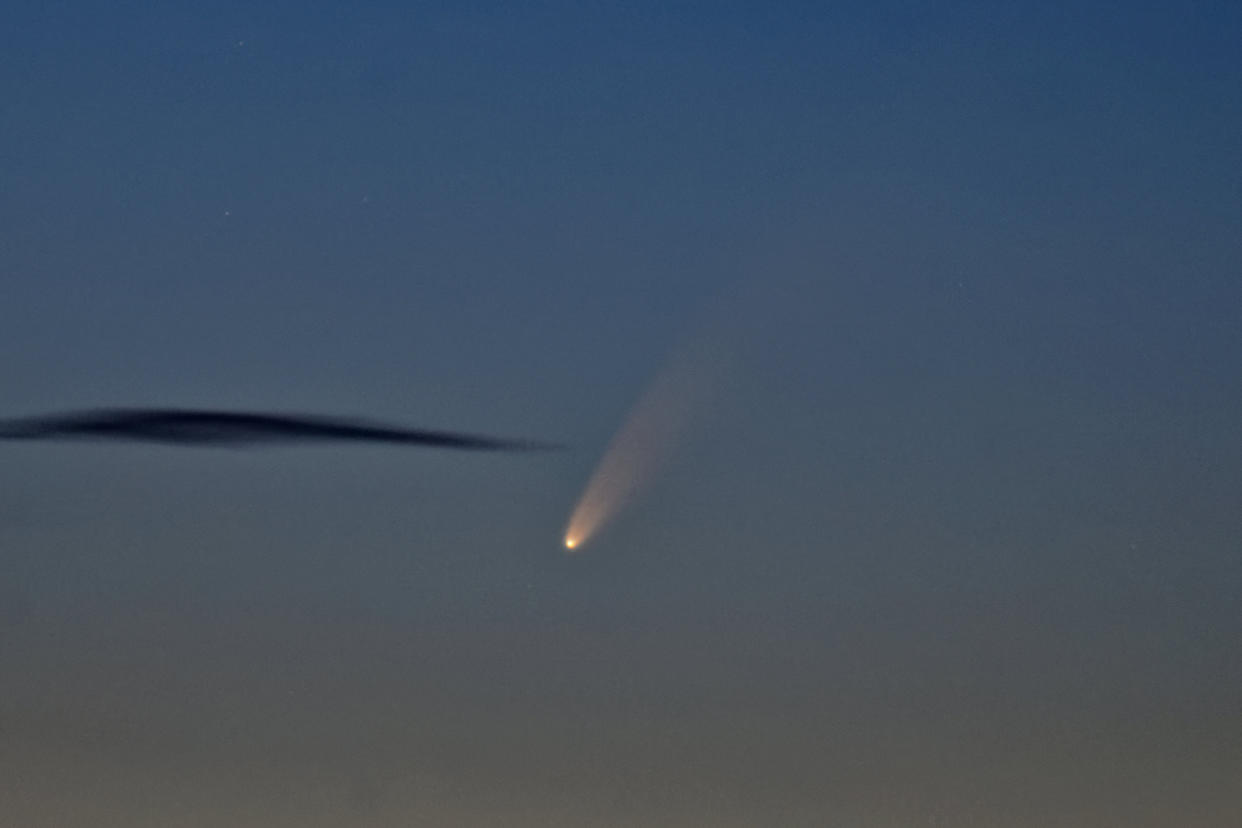Spectacular comet blazes above Britain’s skies this month

A spectacular comet has been streaking across Britain’s skies, and will be visible in the early mornings and evenings this week and next.
Comet C/2020 F3 Neowise was first spotted in March, NASA said, and reached its closest approach, within the orbit of Mercury, last week.
This week, it has been spotted by photographers over Norfolk, and blazing across the skies of Hungary and Lebanon.
Read more: Life on Earth could have arrived on a comet
The comet was also pictured by astronaut Bob Behnken on board the International Space Station.
Last night's fireworks, for real. Because Science. #NEOWISE #comet pic.twitter.com/IKcJ1wLFAl
— Bob Behnken (@AstroBehnken) July 5, 2020
The comet was spotted on March 27 by the Neowise space telescope.
The interplanetary iceberg survived the heat of the sun and is now becoming closer to Earth as it starts its long trek back to the outer solar system.
Read more: Ancient human settlement was destroyed by a comet 12,800 years ago
NASA wrote on its Astronomy Picture of the Day page: “As Comet Neowise became one of the few naked-eye comets of the 21st Century, word spread quickly, and the comet has already been photographed behind many famous sites and cities around the globe.
“The future brightness of Comet Neowise remains somewhat uncertain but the comet will likely continue to be findable not only in the early morning sky, but also next week in the early evening sky.”

The comet’s closest approach to Earth will come on July 23.
Astronomy site Earthsky has a great guide on how to spot the comet, and suggested binoculars as a must for would-be comet spotters, or failing that, a good camera.
The site's Eddie Irizarry wrote: “Right now, there’s a nice binocular comet in the dawn sky. Some skilled observers have reported that – once you spot it with binoculars – you can remove them and see the comet with the unaided eye.
“If you don’t have binocs but do have a good camera, a great alternative is to capture a few seconds long exposure image of the approximate area of the sky. Try at different magnification or zoom settings, and the results should reveal the comet’s nice tail.
Read more: A comet did it! Mystery of giant crater solved
“Using binoculars or other optical aid is a must, though, if you want to see this comet’s split tail.”
By July 25, the comet will appear 30 degrees, or “three fists”, up from the west-northwest horizon as darkness falls.
On July 30 or 31, the comet will be passing just to the north of the fine star cluster of Coma Berenices or Berenice's Hair.



